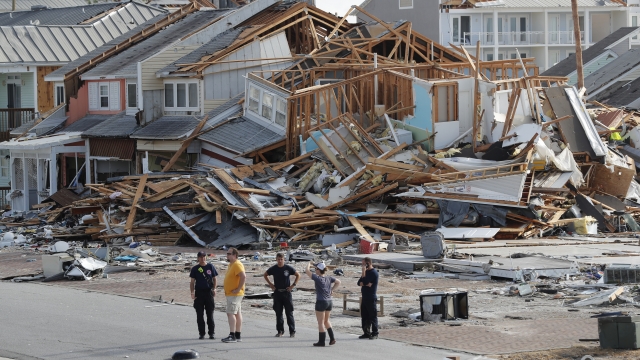About five years ago, Hurricane Michael hit the Florida panhandle with a fury —160 mph winds, a storm surge of 14 feet and nearly a foot of rain.
Almost every building in Mexico beach, Florida, was damaged by the 2018 storm, and 800 of them were destroyed, including most of the homes in Bonny Paulson's neighborhood. But not Bonny Paulson's house.
"From my understanding with the damage to the house was only shingles above the door," said Paulson.
Her round-shaped home shrugged off the Category 5 winds.
"The hurricane hit the house, which is basically designed as a boat, and went right down the sides of the house. There was nothing left except one white house catty-corner to us. Everything else was wiped out," said Paulson.
In storm-vulnerable places, some developers are building homes designed to be more resilient to extreme weather escalated by climate change.
"I'm aware that the earth is changing, folks, you know, and we need to adapt to that. And I think that environmentally, architects are going to have to start thinking out of the box. Definitely outside of the box," said Paulson.
Deltec homes says the houses they build like Paulson's are aerodynamic structures that work with nature — not against it.
Because the roof and floor trusses spread from the center of the house, wind energy is dispersed during storms.
SEE MORE: Homeowners scrambling to find insurance in natural disaster areas
The design is part of a larger green approach to homebuilding that includes snugly fit solar panels so wind can't get beneath them and flood-reducing landscaping.
Deltec says of the 1,400 homes it has built over the last three decades, only one suffered structural damage from hurricane-level winds
"We have focused on the round design because it's so unique and people like it for a very specific reason: what it does for them and their lot, [it] encapsulates views, the strength of engineering, of course, and the energy efficiency," said Hart.
Other companies build hurricane-resistant homes using materials like bendable glass and ultra-strong concrete.
A Bahamian company called Offsite CLT Construction says its cross-laminated timber, in which boards are glued together, can withstand winds of 185 mph.
Building codes have been toughened in some places in the United States in the wake of high-intensity storms. But a recent report by insurance underwriter Swiss Re says more needs to be done — and quickly.
The report says 60 million Americans live in areas vulnerable to hurricanes and that there is "a real-world need for adaptation efforts to accelerate."
For Paulson, her Florida home surviving after Hurricane Michael serves as a warning to others.
"I don't really feel that the population is taking too into effect the environmental catastrophes and adjusting for it. We're building the same old stuff that got blown away, the same old stuff that wasn't necessarily foolproof and safe," said Paulson.
Trending stories at Scrippsnews.com



